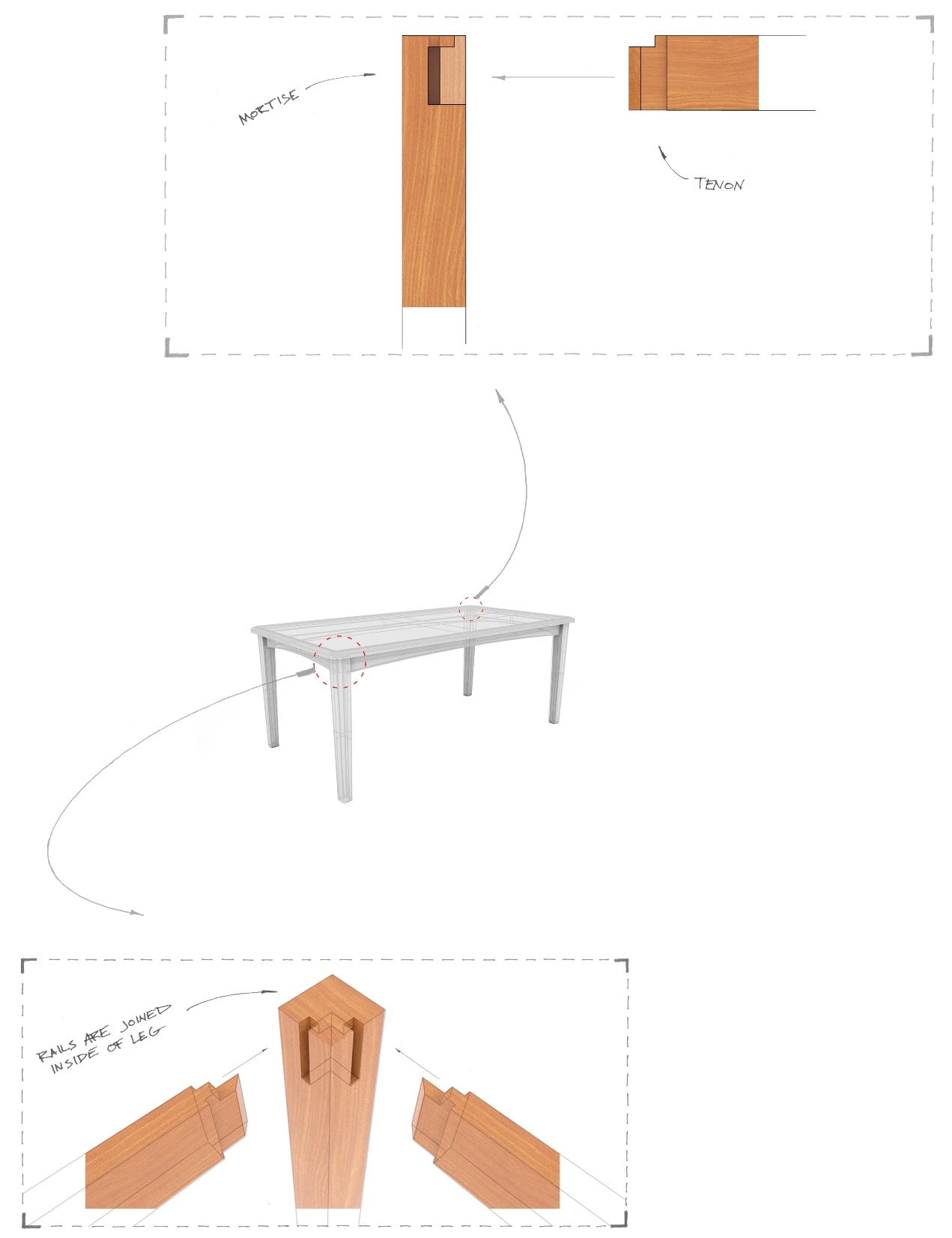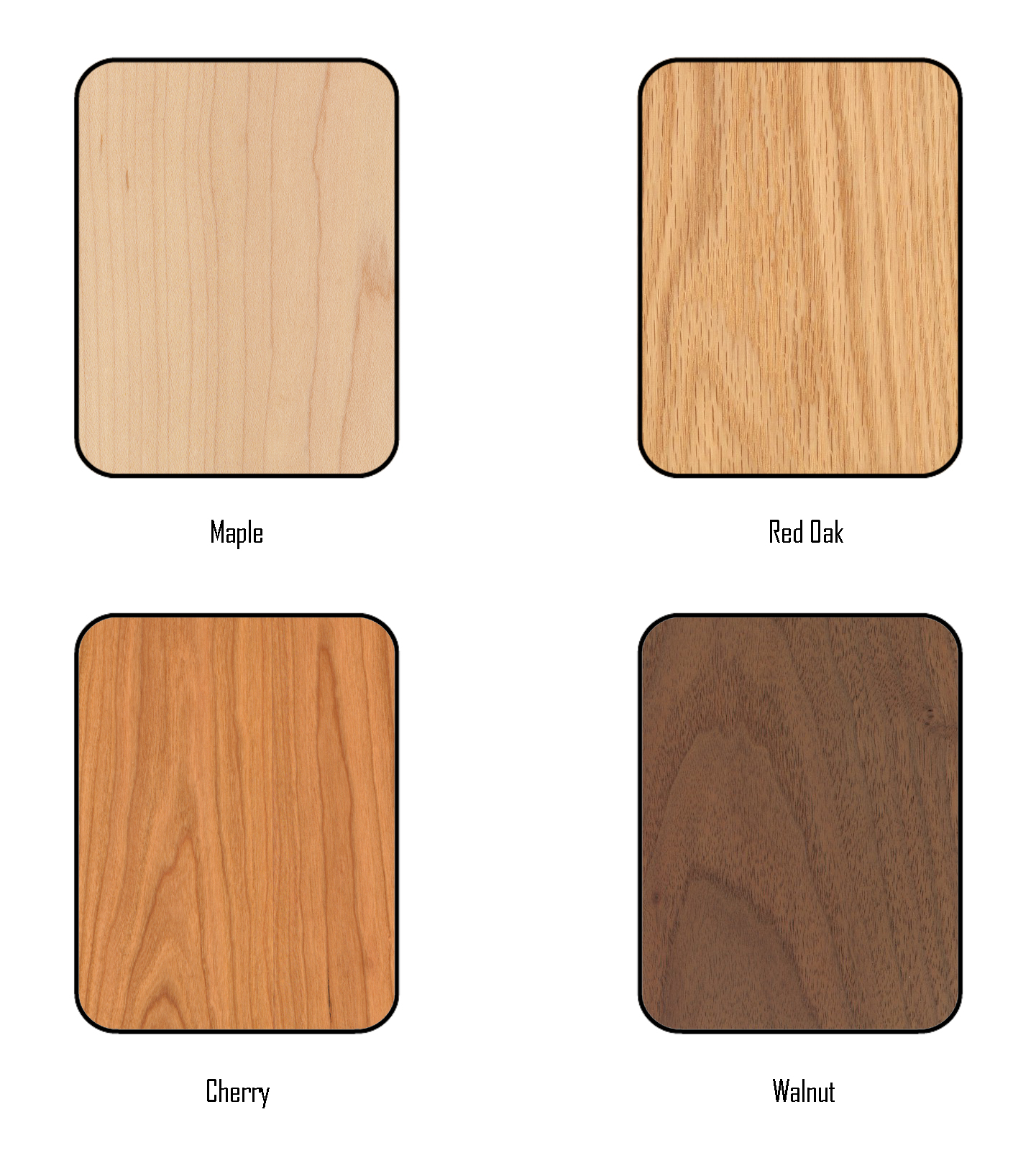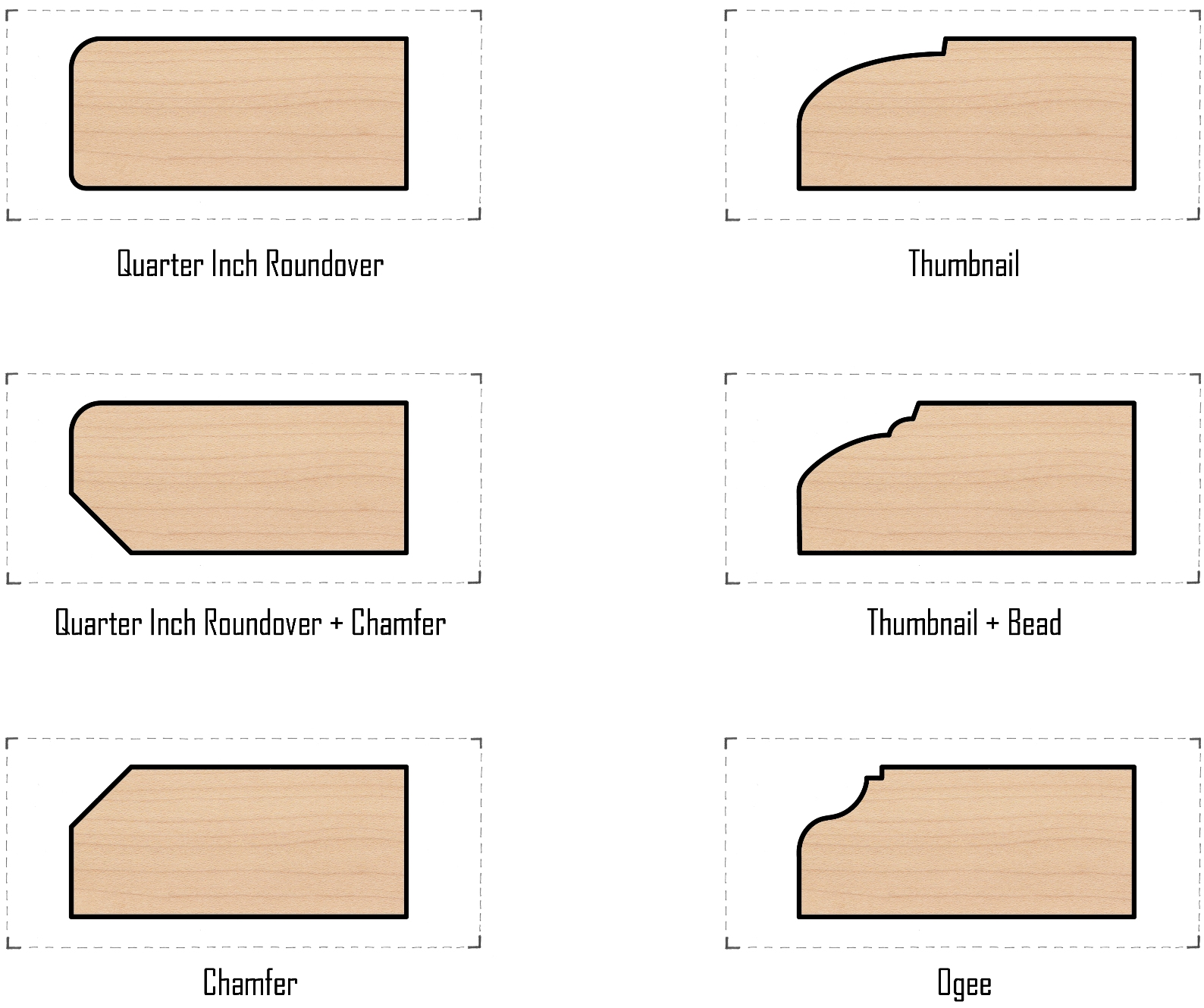DESIGN OPTIONS
Personalize the details of your custom table.
It’s not just any other solid wood table.
It’s solid wood, crafted with real joinery.
A high quality piece of furniture is comprised of a number of fundamental components; the most essential
of which is the structural system holding all of these things together, commonly known as the “joinery”. Our tables
are one of a kind in 2015 because they’re built with traditional mortise + tenon joinery; hybridized with modern
procedures +techniques to maintain efficiency, yet still hand crafted. Introduce yourself to the last table you will ever buy.
Learn more about wood joinery →
With ten sizes to choose from, the overall
dimensions can be tailored to fit your space.
The general rule of thumb on sizing is a minimum of about 24″ of table edge, per person.
Something closer to 30″ will provide far more comfort. As far as the overall width goes, 38″ is
common for kitchen tables, and 42″ is more common for traditional dining tables.
Learn more about table sizing →
Assign materiality. Choose from
four popular domestic wood species.
The choice of wood species for a table is a relatively important decision. In general, you want the overall appearance to match the existing space.
Other than basic aesthetics, the type of wood you choose should match the way you will use the table. If the surface will see some action, choose
something harder and more durable, such as maple or oak. If a rich, natural color is what your after, maybe consider cherry or walnut.
Learn more about wood species →
Help your table fit in. Customize the edge
profile to fit your space and your personality.
The edge profile defines the condition or shape of the edge of the table. Not just part of the overall formal aesthetics, many
find a profile such as the thumbnail to be more comfortable than a simple rounded edge. The edge profile can also
serve to add visual interest, such as creating the illusion that the table top is thinner than it actually is.
Learn more about edge profiles →
Embrace the freedom of
tectonic variation.
Interested in some even finer articulation? Reducing the mass of the legs + arching the aprons creates a lighter, more elegant
presence in a space. Even minor design decisions such as this can alter the spatial qualities of a room in unforeseen ways.
Learn more about the formal options →
Finished to sustain more
than just a piece of furniture.
The main purpose of a wood finish is to protect the work which lies beneath. However, nothing lasts forever; everything degrades over time.
We believe that chemical finishing should embrace the optimum middle ground between overall protection of the furniture and the environment.
Taking advantage of the most recent advances in finishing chemistry + technology, we utilize only the highest quality water borne finishes on our furniture.
Learn more about wood finishing →









Comments are closed.